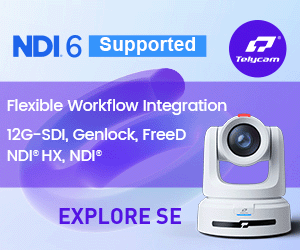(header image courtesy of Wowza)
The word streaming can relate to different technologies from different manufacturers in different scenarios and in this short article we are going to take a little tour of what it all means. When streaming video to the consumer you often see HLS DASH & CMAF mentioned.
- HLS is HTTP Live Streaming
- Dynamic Adaptive Streaming over HTTP
- CMAF Common media application format (MPEG-A #19)
These are all adaptive streaming technologies that chop a stream into chunks and encode at different bitrates to squeak the video down the standards web server port in your domestic router.
The goal is to hide as much of the technology as possible from the consumer so they don't know about MP4 or Transport Stream or bitrates or latency or the fact the ads are coming from a different server on the other side of the planet.
Next up we have General Purpose Video over IP solutions that might also use the consumer oriented protocols but often include extra protocols on a local area network that can be made more permissive about port usage, these might be
- RTSP Real Time Streaming Protocol - for control
- RTMP Ream Time Messaging Protocol - another control protocol
- and Multicast broadcasts to get one signal to multiple destinations without duplication
Next we have a bunch of point to point and mesh streaming tools that are often used in speciality applications where you need better quality or lower latency or different resolutions from a single encode.
Now we start to see more protocols appearing like
- HDBaseT - HDMI + USB + Ethernet over IP
- IGMP - Internet Group Management Protocol
- SDN - software defined networking
And lastly we have protocols that cope with very high bandwidth uncompressed content for pristine productions
- NMOS - Networked Media Open Specifications
- ST 2022 - High bitrate including uncompressed over IP
- ST 2059 - Precision Time Protocol
- ST 2110 - component media transport protocols from SMPTE
So there is a lot of streaming out there to meet every need. Not all the solutions interoperate, so it's worth doing a little homework to make sure the solution fits your need. Get in touch with KitPlus if you want a quick deep dive on any of these topics











































